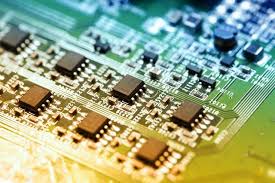- 20
- Sep
Overview of thermal reliability of PCB
Overview of thermal reliability of PCB
In general, copper foil distribution on PCB boards is very complex and difficult to accurately model. Therefore, it is necessary to simplify the shape of wiring during modeling, and try to make ANSYS model close to the actual circuit board. Electronic components on the circuit board can also be simulated by simplified modeling, such as MOS tube and integrated circuit block.

1. Thermal analysis
Thermal analysis during SMT processing assists designers in determining the electrical properties of components on the PCB and in determining whether components or circuit boards will burn out due to high temperatures. The simple thermal analysis only calculates the average temperature of the circuit board, while the complex transient model is established for the electronic equipment with multiple circuit boards. The accuracy of thermal analysis ultimately depends on the accuracy of component power consumption provided by the circuit board designer.
In many applications where weight and physical size are very important, if the actual power consumption of the component is very small, the safety factor of the design may be too high, and the design of the circuit board may be based on the thermal analysis of the component power value that is inconsistent with the actual or too conservative. The opposite (and more serious) is a low thermal safety design, in which the component actually runs at a higher temperature than the analyst predicted. This problem is usually solved by installing a radiator or fan to cool the circuit board. These add-ons add cost and lead to increased downtime, and the addition of fans to the design also creates instability in reliability, so active rather than passive cooling methods (such as natural convection, conduction, and radiation) are used for the boards.
2. Simplified modeling of deska
Before modeling, analyze the main heating devices in the circuit board, such as MOS tubes and integrated circuit blocks, which convert most of the lost power into heat during operation. Therefore, the main consideration for modeling is these devices.
In addition, consider copper foil as wire coating on the PCB substrate. They not only play a conductive role in the design, but also play a role in heat conduction, its thermal conductivity and heat transfer area are relatively large circuit board is an indispensable part of the electronic circuit, its structure is composed of epoxy resin substrate and copper foil coated as a wire. The thickness of epoxy substrate is 4mm, and the thickness of copper foil is 0.1mm. Copper has a thermal conductivity of 400W/(m℃), while epoxy has a thermal conductivity of only 0.276W/(m℃). Although the added copper foil is very thin, it has a strong guiding effect on heat, so it cannot be ignored in modeling.
